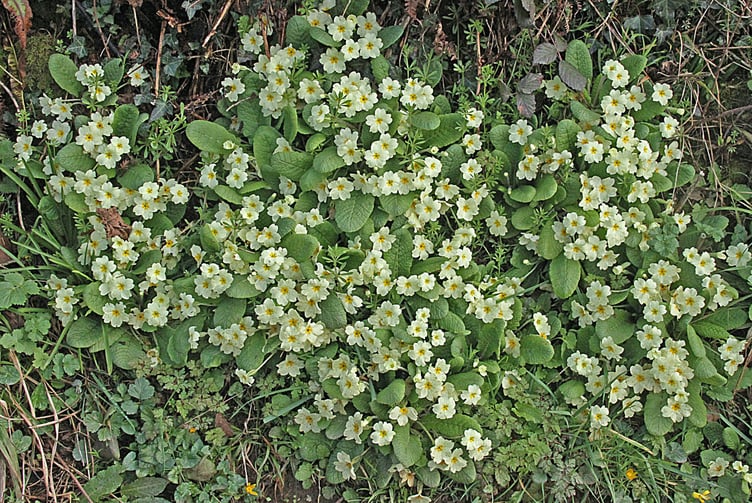Next Wednesday (April 19) is Primrose Day, which marks the anniversary of the death, in 1881, of British statesman and Prime Minister Benjamin Disraeli whose widow placed a wreath of wild primroses on his grave.
The hedgerows around Quethiock have a beautiful showing of this lovely spring flower, which was Disraeli’s favourite bloom.
During the 1940’s along with my brothers and sisters, we used to pick wild primroses from the hedgerows and bunch them up, 12 flowers and three leaves, tied with a short length of wool and carefully placed in boxes.
This precious cargo would be taken to Saltash railway station and carried to London to be sold at various markets.
Several days later we would be rewarded with a few pennies to share between us.
Of course, this practice was stopped in the 1950’s when it became illegal to pick wildflowers for sale.
I walked down to the Old Vicarage where I know that Pink Purslanes would be out in bloom.
Although they are very often seen growing in damp places and along the banks of streams, down here they favour the south facing hedgerow alongside the road.
I can only think that when it rains the prevailing wind from the southwest gives this hedge a really good watering down.
There were several early Greater Stitchwort opening their white flowers on rather thin stems that rely on surrounding vegetation to hold them up.
Their common name ‘stitchwort’ refers to its use back in Medieval times when its roots were used to relieve a ‘stitch’ in the abdomen.
Tiny Germander Speedwell blooms are plentiful along most of the hedgerows that I slowly walked beside, and open up wide when the sun shines on them.
These lovely four-petalled, blue flowers were once thought to speed travellers along the byroads and are visited by bees and flies for their pollen.
Marsh Marigolds or Kingcups – a name they richly deserve – like to grow along the edge of streams and rivers. In fact, they are quite happy with their roots and lower stems actually in the water.
With their gorgeous yellow blooms they are easy to spot among waterside vegetation, and although the whole plant is poisonous, bunches of Kingcups were once hung over shed doorways on May Day to protect cattle from witches and fairies.
We had a visit of a Long-tailed tit on one of the bird feeders and looking into my records (my scrap books) the last time I photographed one in the garden was in February 2020.
Although their name suggests that they are members of the Tit family, they are no relation, even though they act like true Tits.
It is nice to see them anyway no matter what family they belong to, and this visitor seemed to stop just long enough for a good meal and then left.





Comments
This article has no comments yet. Be the first to leave a comment.